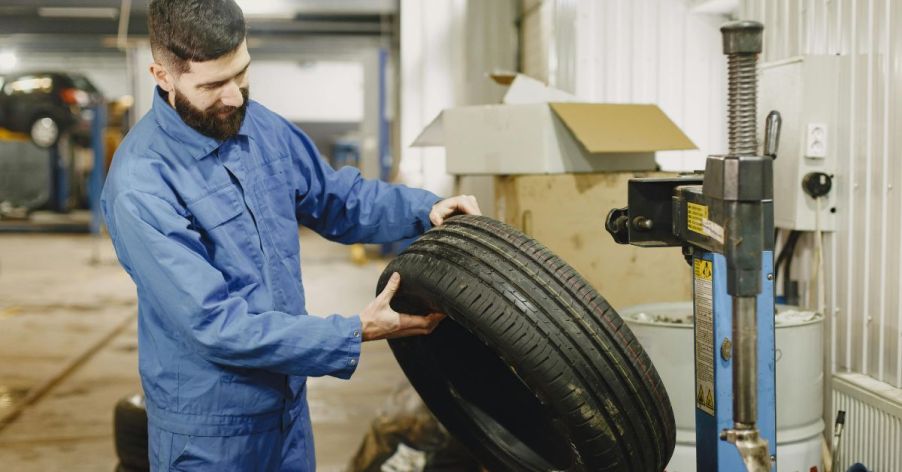
15 Tips To Prevent Tire Dry Rot Like a Pro

Dry rot might sound harmless, but it’s a silent tire troublemaker that can sneak up when you least expect it. You don’t have to be an expert to prevent it, though. With a bit of care, your tires can stay healthy and crack-free. Discover these 15 tips to keep dry rot at bay.
Regularly Inspect Your Tires

Don’t wait until something feels off. Make it a routine to visually check your tires every few weeks. Look for small cracks, especially on the sidewalls. Catching these early signs of dry rot can help you avoid bigger problems later. A quick walk-around could save you from a roadside breakdown.
Keep Tires Properly Inflated

Underinflated tires are more prone to dry rot. Keeping them at the correct pressure not only improves your gas mileage but also prolongs their lifespan. Check your tire pressure monthly, particularly before long trips. You can’t go wrong with a tire gauge when it comes to good tire care.
Keep Your Vehicle in a Cool, Dry Place

Tires hate extreme weather. Continuous exposure to heat or cold can accelerate dry rot. If possible, store your vehicle in a garage or a shaded area. For more extended storage periods, consider tire covers. They shield your tires from UV rays and extreme temperatures that speed up wear.
Rotate Your Tires Regularly

Tires wear unevenly, which can lead to premature dry rot in overused spots. Regularly rotating your tires, about every 6,000 miles, ensures even wear. This small effort can extend the life of your tires, helping prevent unnecessary damage. Plus, it’s a great reason to check your tires’ overall condition.
Avoid Prolonged Parking

Leaving your car parked in one spot for too long can flatten and weaken the tires. When a tire remains stationary for weeks or months, it develops flat spots, which increase the chances of dry rot. Try moving your car every now and then, especially if it’s not in regular use.
Use Tire Protectants

Just like sunscreen for your skin, tire protectants shield against harmful UV rays. Regularly applying a tire protectant will create a barrier between your tires and the elements. Choose water-based products for a safer, more effective shield against dry rot. Also, they make your tires look great.
Avoid Overloading Your Vehicle

Carrying more weight than your tires are rated for can lead to overstraining, which makes dry rot more likely. Check your vehicle’s load rating and avoid overloading, especially on long trips. It’s not just about saving your tires but also a safety measure for you and your passengers.
Drive Regularly

Surprisingly, leaving your car unused for long periods can contribute to dry rot. Tires are made to move, and sitting idle can cause them to stiffen and crack. If you’re not using your vehicle often, take it for short drives now and then to keep the tires flexible and healthy.
Keep Tires Clean

Dirt, debris, and road grime can build up on your tires, which accelerates dry rot. Regularly cleaning your tires with mild soap and water removes harmful elements that degrade rubber. Pay special attention to the grooves and treads, where dirt tends to hide. Clean tires are happy, long-lasting tires.
Maintain Proper Alignment

Misaligned wheels cause uneven wear and lead to certain areas of the tire deteriorating faster than others. This imbalance increases the risk of dry rot. Getting your tires aligned regularly ensures even wear and reduces unnecessary stress. You’ll also enjoy a smoother, more comfortable ride.
Invest in Quality Tires

Cheap tires might seem like a bargain, but they often come at the cost of durability. Investing in high-quality tires with built-in protection against environmental factors can prevent dry rot from developing too soon. As far as tire longevity and performance are concerned, you get what you pay for.
Cover Tires When Not in Use

For vehicles in storage, covering your tires is one of the best defenses against dry rot. UV rays, rain, and dirt are all culprits in accelerating tire decay. A simple tire cover keeps them safe and extends their life, which makes it an inexpensive way to avoid costly replacements later.
Avoid Chemicals Near Tires

Harsh chemicals like gasoline, oil, or solvents can weaken the rubber on your tires, which makes them more prone to dry rot. Keep chemicals away from your tires, and be cautious when working on your car. If spills happen, clean them up quickly to protect your tires from unnecessary damage.
Replace Tires Every 6 to 10 Years

Even with the best care, tires don’t last forever. If your tires are older than six years, consider replacing them, especially if you see signs of dry rot. Regular inspections can help you time replacements before a blowout occurs, keeping you safe on the road.
Stay Up-to-Date on Tire Recalls

Recalls happen, and they’re often for safety reasons, including premature wear or defects that could lead to dry rot. Stay informed about tire recalls by registering your tires with the manufacturer or checking recall lists online. It’s an easy step that can prevent bigger issues down the road.


